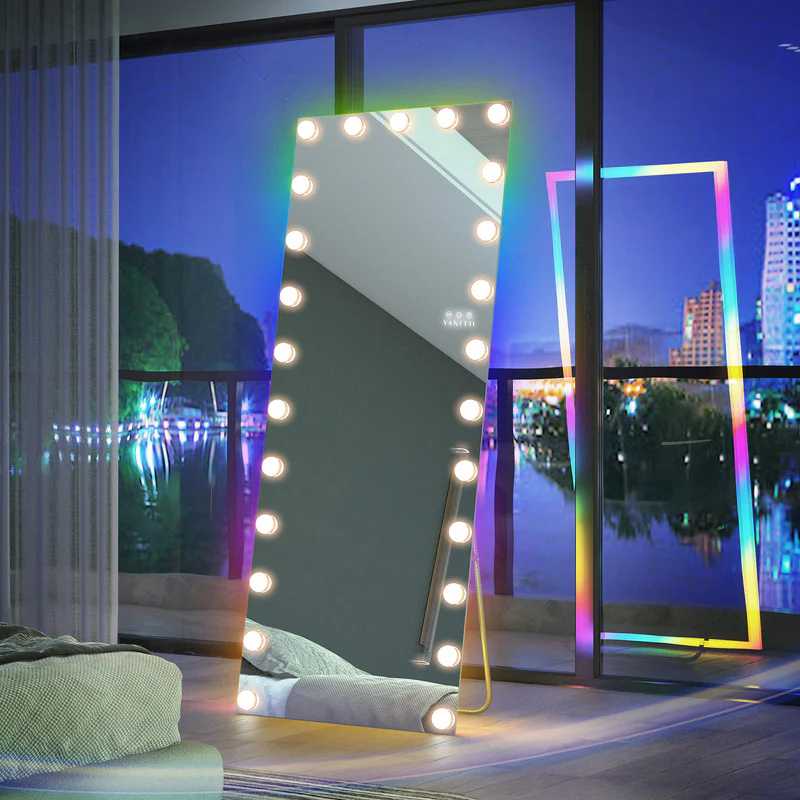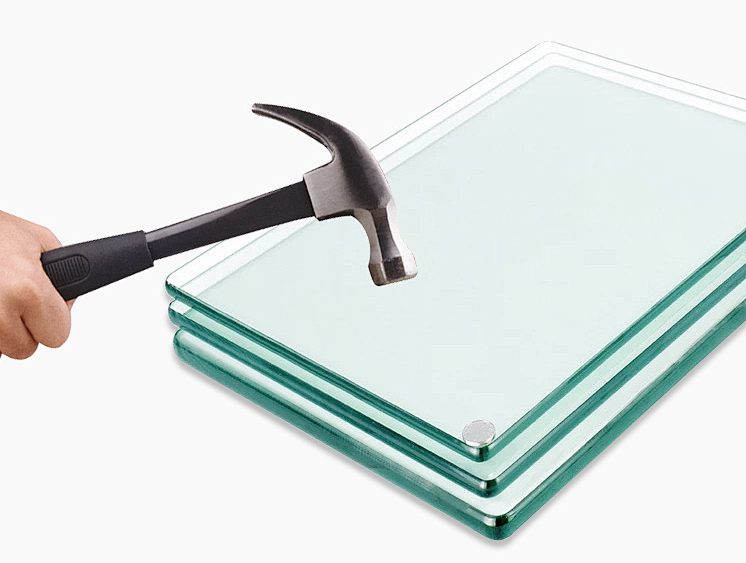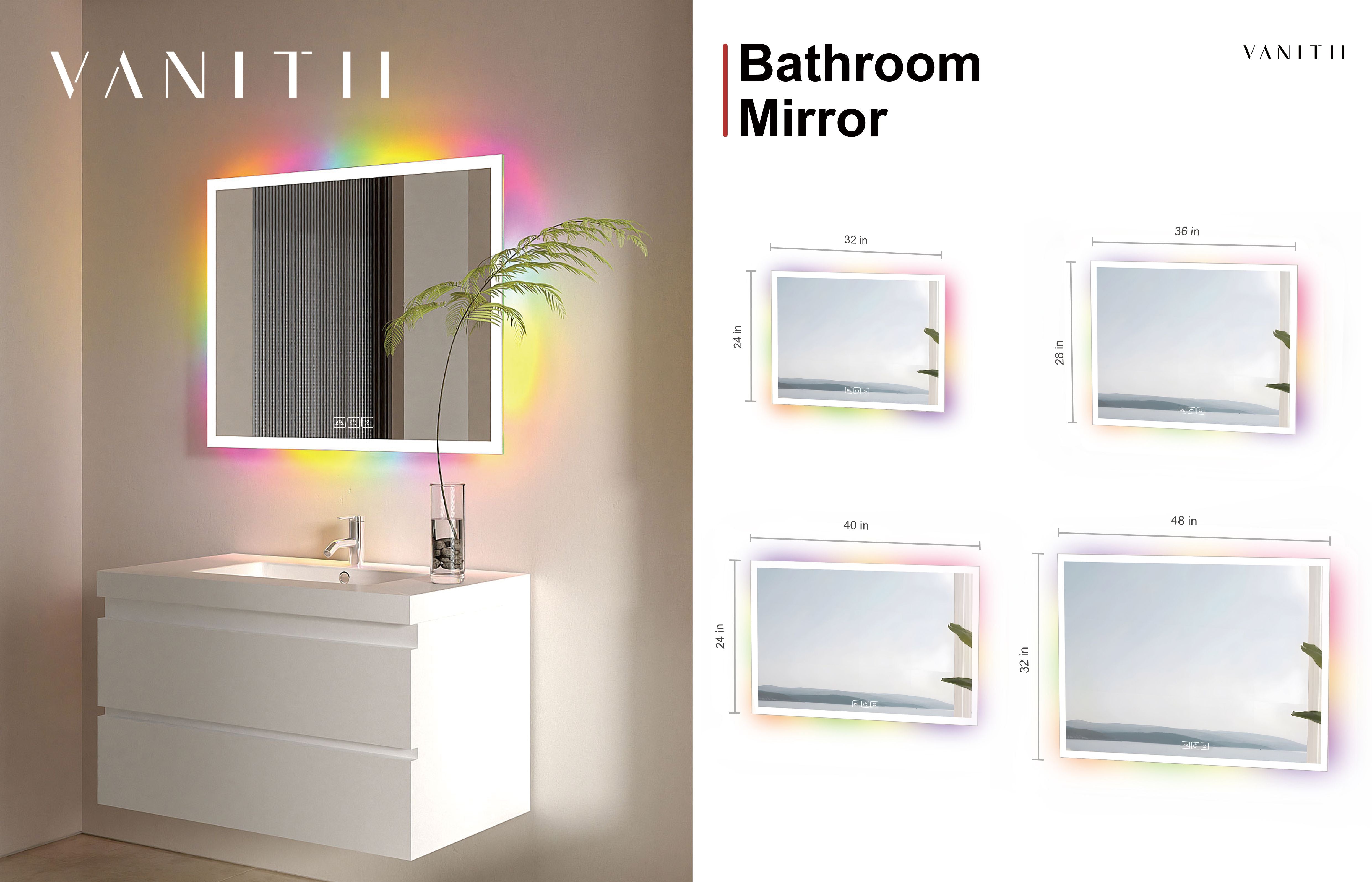In the world of interior design, mirrors play a crucial role in enhancing space, light, and style. When it comes to choosing the perfect mirror for your home, two main contenders often come to mind: the wall mirror and the standing mirror. Both types offer unique benefits and can dramatically transform your living spaces. But which one truly reflects your personal style and meets your practical needs? Let's dive into the world of mirrors and explore how these reflective pieces can elevate your home decor.

Wall Mirrors Basics
Wall mirrors have long been a staple in home decor, offering both functionality and aesthetic appeal. These flat, reflective surfaces are designed to be mounted directly on walls, making them a popular choice for various rooms in the house.
Advantages of Wall Mirrors
- Space-saving benefits: One of the primary advantages of wall mirrors is their ability to save floor space. In smaller rooms or apartments where every square foot counts, a wall mirror can be the perfect solution for adding depth without sacrificing valuable floor area.
- Variety in shapes and styles: Wall mirrors come in an impressive array of shapes, sizes, and styles. From classic rectangular shapes to more avant-garde designs, there's a wall mirror to suit every taste. Decorative wall mirrors can serve as stunning focal points in living room wall decor, adding character and visual interest to otherwise plain walls.
- Fixed viewpoint and stability: Once installed, wall mirrors provide a consistent reflection from a fixed point. This stability can be particularly useful in entryways or bathrooms where you need a reliable mirror for quick check-ups before heading out.
Ideal Environments for Wall Mirrors
Wall mirrors shine in various settings throughout the home:
- Smaller spaces and narrow rooms: In tight quarters, a strategically placed wall mirror can create the illusion of more space, making the room feel larger and more open.
- Hallways: These areas often benefit from the added light and sense of space that wall mirrors provide.
- Decorative purposes in living areas: Custom wall mirrors can be used as statement pieces in living rooms or dining areas, reflecting light and adding a touch of elegance to your interior design.

Standing Mirrors Basics
Standing mirrors, also known as floor mirrors or leaning mirrors, offer a different set of advantages and can make a bold statement in any room.
Benefits of Standing Mirrors
- Mobility and flexibility: Unlike their wall-mounted counterparts, standing mirrors can be easily moved around the room or from one space to another. This flexibility allows you to experiment with different placements and angles.
- Multifunctionality: Many standing mirrors come with additional features like storage options or jewelry organizers, making them practical pieces of furniture beyond their reflective purpose.
- Impact on room's ambiance: A full-length standing mirror can dramatically alter the feel of a room, creating a sense of grandeur and expanding the perceived space.
Suitable Settings for Standing Mirrors
Standing mirrors excel in several areas of the home:
- Bedrooms and dressing rooms: A bedroom floor mirror is ideal for outfit checks and can double as a stylish decor element.
- Large spaces needing an accent piece: In spacious living rooms or open-plan areas, a standing mirror can serve as a striking focal point.
- Areas with variable lighting: The ability to move a standing mirror allows you to capture the best natural light throughout the day.
Comparing Wall and Standing Mirrors
When deciding between a wall mirror and a standing mirror, several factors come into play:
1. Space and Positioning Considerations
Wall mirrors are ideal for maximizing space in smaller rooms, while standing mirrors can make a bold statement in larger areas. Consider the available floor space and wall area when making your choice.
2. Style Implications and Adaptability
Both types of mirrors can adapt to various interior design styles. Antique standing mirrors can add a touch of vintage charm, while modern wall mirrors can complement contemporary decor. The key is to choose a mirror that aligns with your overall design aesthetic.
3. Maintenance and Durability
Wall mirrors, once properly installed, require minimal maintenance. Standing mirrors may need occasional adjustments but offer the flexibility of easy relocation. Both types can be equally durable, depending on the quality of materials and construction.
4. Price and Budget Considerations
Prices can vary widely for both wall and standing mirrors, depending on size, quality, and design. Generally, basic wall mirrors tend to be more affordable, while elaborate standing mirrors can be investment pieces.
How to Choose: Factors to Consider
Selecting the right mirror involves more than just personal preference. Here are some key factors to keep in mind:
- Personal style and existing home decor: Your choice should complement your current interior design. Consider how the mirror will fit with your existing furniture and decor elements.
- Intended use and practicality: Think about the primary function of the mirror. Is it purely decorative, or does it need to serve a practical purpose?
- The optical illusion of space: Both types of mirrors can create the illusion of more space, but in different ways. Wall mirrors can make a room appear wider, while tall standing mirrors can emphasize ceiling height.
- Long-term considerations: Think about the longevity of your choice. A wall mirror might be a more permanent fixture, while a standing mirror offers flexibility for future decor changes.
Your mirror selection should ultimately serve as both a reflection of your style and an enhancement to your living environment. Considering these factors ensures that your choice not only suits your immediate aesthetic but also adapts gracefully to the evolving story of your home.
Tips for Incorporating Mirrors Into Your Style
Whether you opt for a wall mirror or a standing mirror, here are some tips to make the most of your choice:
1. Integrating Wall Mirrors Seamlessly
Using a large wall mirror can serve as the centerpiece in your living room, instantly drawing the eye and adding elegance. For a more creative approach, consider a collection of small decorative mirrors arranged gallery-style on a wall, which can add character and a touch of artistry. To effectively double the natural light in a room, place a mirror directly opposite a window – this not only brightens the space but also creates the pleasant illusion of an additional window.
2. Decorating with Standing Mirrors
A full-length standing mirror propped casually against a wall can give a room a sense of laid-back chic, while also making it appear larger. If there’s a particular corner that feels dim or closed off, a strategically placed standing mirror can open it up and bring in light. For those who love a project, personalizing a plain standing mirror with your own choice of frames or decorations can be a satisfying DIY that makes the piece uniquely yours.
3. Expert Advice on Lighting and Reflections
The secret to making the most of mirrors lies in what they reflect. Position mirrors so they capture and bounce back appealing views or parts of your decor that you love, whether it's a chandelier, a piece of art, or just a well-styled shelf. Lighting plays a crucial role too, as mirrors can significantly boost both daylight and artificial light within a room. Place mirrors where they can spread light evenly, enhancing the ambiance and mood of your space.
Make Your Space Reflect Your Style
Both wall mirrors and standing mirrors have their unique strengths in interior design. Wall mirrors offer space-saving solutions and can be powerful tools in creating the illusion of larger rooms. They're versatile enough to fit in any space, and you can place your wall mirror from narrow hallways to expansive living rooms. On the other hand, standing mirrors provide flexibility and can serve as striking decorative pieces, especially in bedrooms and spacious areas.
Ultimately, the choice between a wall mirror and a standing mirror depends on your specific needs, space constraints, and personal style. Consider the intended use, available space, and how the mirror will interact with your existing decor. Whether you opt for a sleek wall mirror to maximize a small space or a grand standing mirror to make a bold statement, remember that mirrors are more than just functional items – they're powerful design elements that can transform your living space.




Leave a comment
This site is protected by hCaptcha and the hCaptcha Privacy Policy and Terms of Service apply.